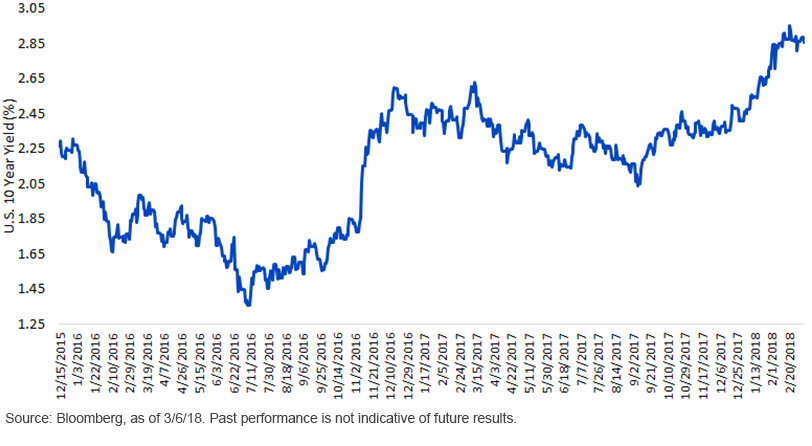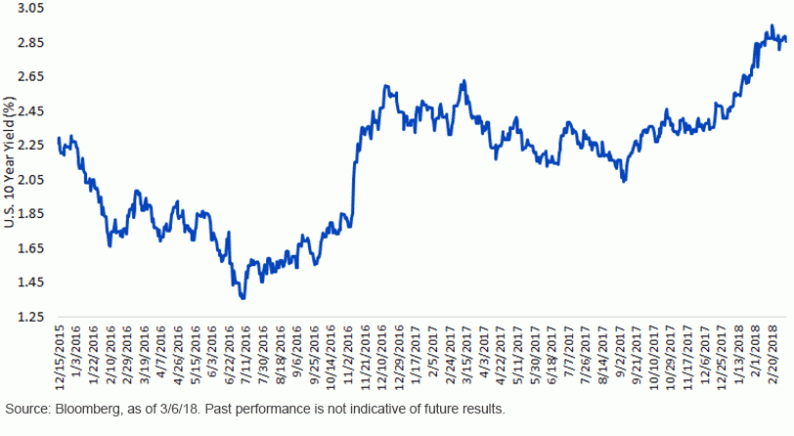While fixed income strategists have called for rising rates in nearly every year since the financial crisis, 2018 has marked one of the worst starts for bond investors since 1996.1 With 10-year rates up more than 45 basis points (bps), many investors are questioning what if any changes they should be making to their portfolios. Central to this decision is their view on inflation and Federal Reserve (Fed) policy. In this piece, we examine the impact on U.S. interest rates and fixed income returns since the Fed started tightening in December 2015.
Rising Rates Where?
Despite hiking the Federal Funds Rate five times, U.S. 10-year bond yields have spent much of their time lower than where they started. In our view, this has primarily been a function of the outlook for global growth along with inflation. With expectations for both forecasts to rise in 2018, longer-term bond yields around the world have started to take note.
U.S. 10-Year Yield, 12/15/15–3/6/18

With rates at their highest levels since 2014, the recent pause has many wondering if we’re poised to retrace or move higher. While hardly a stretch, we’re inclined to believe that we may have seen the cycle low in U.S. interest rates. As higher bond yields generally imply poor returns for fixed income, the gradual rise in rates (until recently) has meant that most investors have been able to avoid negative total returns. In the chart below, we highlight a variety of ways investors can reduce their exposure to rising rates.
Historically, investors could reduce legacy fixed income positions and increase exposure to cash, shorter-duration fixed income or floating rate strategies. As we highlighted back in 2013, traditional approaches to rising rates often involve trade-offs. Below, we contrast these traditional approaches with the Indexes in WisdomTree’s rising rates suite.
Impacts of Fed Rate Hikes on Fixed Income Returns, 12/15/15–3/6/18












Leave A Comment